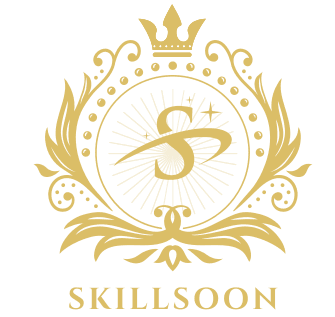Icelandic is mainly spoken in Iceland and comes from the old Viking language, Old Norse. It has changed very little, much like the ancient Viking language, even today. Icelandic is one of the North Germanic languages, which also includes languages like Swedish and Danish.
Icelandic is hard to learn because it is so isolated, its language has mostly stayed the same and differs from other North Germanic languages. If you know a North Germanic language, some parts of Icelandic might be more accessible. But if you don’t, Icelandic could be pretty challenging to learn due to its unique words and rules.
In this article, we will look at Icelandic, a language from an exciting place called Iceland. We’ll dive into its unique words, how it sounds, and what makes it unique compared to other languages. Join us to learn more about this fascinating language and its rich history!
Is Icelandic Hard to Learn?
Yes, it can be hard to learn for many US natives because Icelandic grammar is complex, featuring four noun cases, three genders, and a variety of irregular verbs. Its vocabulary often strays from familiar Germanic roots, opting for unique, homegrown terms. Pronunciation also includes sounds unfamiliar to many language learners. On top of this, Icelandic’s smaller speaker population means fewer learning resources compared to more widely spoken languages.
However, the country’s focus on education and tourism provides quality learning materials. The U.S. Foreign Service Institute claims that Icelandic falls into one of the greater difficulty categories for native English speakers, requiring more study hours for proficiency.

How Long to Master Icelandic?
Icelandic isn’t the most accessible language for English speakers, but don’t be discouraged. The journey can vary depending on your goals and how intensively you study. You should chit-chat or aim for total fluency.
Setting Your Icelandic Goals: If you aim for casual Icelandic conversations, you’re looking at roughly 600-750 hours. This is like carving out an hour daily for about two years. You’ll need to invest between 900-1200 hours for a more in-depth working proficiency. It might seem like a tall order, but think about the payoff: confidently discussing almost any topic.
Daily Dedication: For those dedicating an hour a day, be prepared for a 2 to 3.5-year commitment to achieve solid proficiency. But if you’re ambitious and can manage 5 hours daily, you’ll be chatting away confidently in just 6 to 9 months.
Picking the Right Tools: The resources you choose can have a significant impact on your learning curve:
Solo Learning: While books and online platforms offer flexibility, they might extend your learning time due to limited speaking opportunities.
Classroom Learning: A more structured approach, it provides a clear path, feedback, and the bonus of practicing with classmates.
Dive Into the Icelandic Culture: Considering living in Iceland? It’s like a language crash course, immersing you fully.
Pair Up: Teaming up with a tutor or finding a language exchange buddy offers a blend of theoretical learning and practical speaking experience.
Why Icelandic Is Hard to Learn?
The Icelandic language has preserved many characteristics from its ancestor, Old Norse, that other Germanic languages have lost over time. Even today, Icelandic bears many similarities to Old Norse, the language of the Vikings. Between the 9th and the 13th centuries, people in Scandinavia and their overseas colonies spoke Old Norse, a North Germanic language.
While languages evolve, Icelandic has remained closer to its Old Norse roots compared to its sister languages, maintaining specific grammatical structures, vocabulary, and phonetic features.
Reasons Why Icelandic Is Considered Difficult to Learn
Icelandic is often considered challenging for many learners, especially for those whose native language is quite distinct from Icelandic. Here are some reasons why Icelandic is perceived as a complex language to learn:
- Icelandic is highly inflectional, meaning that words change form depending on their grammatical role in a sentence. This requires learners to memorize numerous forms for a single word, particularly for nouns, pronouns, adjectives, and verbs.
- Many Icelandic words are unique to the language, with few cognates in other languages. This means that learners often can’t rely on familiar vocabulary from their native language or other languages they know.
- Icelandic contains sounds that are not present in many other languages. The pronunciation can be challenging, especially for those unfamiliar with specific sounds, such as the voiceless alveolar lateral approximant (a specific “l” sound).
- Although Icelandic spelling is relatively phonetic, it uses certain letters that are unfamiliar to speakers of many other languages, such as “þ” (thorn) and “ð” (eth).
- Icelandic verbs can be complex due to their conjugation patterns. There are four moods, three voices, two tenses, and various persons and numbers to account for.
- Icelandic uses four points (nominative, accusative, dative, genitive) to indicate the function of nouns, pronouns, and adjectives in a sentence. Getting a grasp of these cases and their usage can be challenging.
- Unlike English, where the definite article “the” stands as a separate word, in Icelandic, the definite article is suffixed to the noun, adding another layer of complexity for learners.
- Icelandic is known for its compound words, where multiple words are joined together to form a new word. This can be difficult because the meaning of the compound word might not be immediately clear from its parts.
- As with many languages, Icelandic has its share of irregular verbs and nouns that don’t follow standard declension and conjugation patterns.
- Because Icelandic is spoken by a small population (around 360,000 people), fewer learning resources are available than more widely spoken languages.
- The limited presence of Icelandic in global media means that many learners have few opportunities to hear and practice the language outside of Iceland.
- Icelanders are proud of their linguistic heritage and have tried to preserve their language’s purity. This means that many modern concepts and inventions are given new Icelandic names rather than adopting foreign terms, which can add to the vocabulary load for learners.
Conclusion
Icelandic can be hard to learn for many, Like any language, the difficulty can vary for individuals, but with dedication, the right resources, and immersion, proficiency in Icelandic is achievable. With its deep roots in Old Norse, Icelandic offers a captivating blend of history and linguistic complexities.
While its preservation of ancient grammar structures, unique vocabulary, and phonetic nuances can make it challenging, especially for English speakers, its connection to Viking history and the enchantment of its culture can make the learning process deeply rewarding. Though demanding in time and commitment, mastering Icelandic offers a gateway to a rich cultural heritage and a unique linguistic experience.




